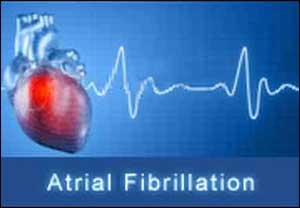- Home
- Editorial
- News
- Practice Guidelines
- Anesthesiology Guidelines
- Cancer Guidelines
- Cardiac Sciences Guidelines
- Critical Care Guidelines
- Dentistry Guidelines
- Dermatology Guidelines
- Diabetes and Endo Guidelines
- Diagnostics Guidelines
- ENT Guidelines
- Featured Practice Guidelines
- Gastroenterology Guidelines
- Geriatrics Guidelines
- Medicine Guidelines
- Nephrology Guidelines
- Neurosciences Guidelines
- Obs and Gynae Guidelines
- Ophthalmology Guidelines
- Orthopaedics Guidelines
- Paediatrics Guidelines
- Psychiatry Guidelines
- Pulmonology Guidelines
- Radiology Guidelines
- Surgery Guidelines
- Urology Guidelines
DOACs treatment in atrial fibrillation patients lowers fracture risk

Denmark: The risk of bone fracture is lower in patients with atrial fibrillation receiving direct oral anticoagulants (DOACs) compared with those on vitamin K antagonist (VKA) therapy, finds a recent study published in the Journal of the American College of Cardiology.
The choice of oral anticoagulant (OAC) has been speculated to affect the risk of osteoporotic fractures. Elderly patients in long-term treatment with VKAs are at high risk of osteoporotic fractures compared with the background population. Casper Binding, Copenhagen University Hospital Herlev and Gentofte in Denmark, and colleagues evaluated the risk of osteoporotic fractures among atrial fibrillation patients treated with VKA or DOACs.
The study included 37,350 patients who were identified from the Danish national registries. They were included on a basis that they had no prior use of osteoporosis medication and they had undergone 180 days of OAC treatment.
Outcomes were hip fracture, major osteoporotic fracture, any fracture, initiation of osteoporosis medication, and a combined endpoint.
- The standardized absolute 2-year risk of any fracture was low among DOAC-treated patients (3.1% to 3.3%) and among VKA-treated patients (3.8% to 4.2%).
- DOAC was associated with a significantly lower relative risk of any fracture (hazard ratio [HR]: 0.85), major osteoporotic fractures (HR: 0.85), and initiating osteoporotic medication (HR: 0.82).
- A combined endpoint showed that patients treated with DOAC had a significantly lower relative risk of experiencing any fracture or initiating osteoporosis medication (HR: 0.84).
Writing in an accompanying editorial, Brian Gage, MD, MSc, of Washington University in St. Louis, Missouri, said: "Because patients with low creatinine clearance or low BMI are both more likely to have an osteoporotic fracture and to be prescribed a VKA rather than a DOAC, residual confounding could have exaggerated the association between VKA and fracture."
"Thus, at least for patients who have Afib and no prior osteoporotic fracture (the population studied), the decision to prescribe a VKA or a DOAC should depend on the risks of ischemic stroke, haemorrhage, need for monitoring, and affordability rather than on the risk of osteoporotic fracture," Gage argued.
In summary, he said, the researchers "had a strong biochemical basis to search for a link between VKAs and osteoporotic fracture. Their well-done observational study provides additional evidence of this link, but residual confounding may have exaggerated the association."
"In a nationwide population, the absolute risk of osteoporotic fractures was low among patients with atrial fibrillation on OAC, but DOAC was associated with a significantly lower risk of osteoporotic fractures compared with VKA," concluded the study authors.
More Information: "Osteoporotic Fractures in Patients With Atrial Fibrillation Treated With Conventional Versus Direct Anticoagulants" published in the Journal of the American College of Cardiology.
DOI: 10.1016/j.jacc.2019.08.1025
Journal Information: Journal of the American College of Cardiology

Disclaimer: This site is primarily intended for healthcare professionals. Any content/information on this website does not replace the advice of medical and/or health professionals and should not be construed as medical/diagnostic advice/endorsement or prescription. Use of this site is subject to our terms of use, privacy policy, advertisement policy. © 2020 Minerva Medical Treatment Pvt Ltd